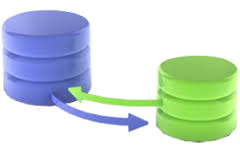Database Migration
Database migration is rather straight forward, assuming the database is used just as storage. It "only" requires moving the data from one database to another. However, even this may be a difficult task. The main issues one may encounter include:

- Unmatched data types (number, date, sub-records)
- Different character sets (encoding)
- Different data types can be handled easily by approximating the closest type from the target database to maintain data integrity.
If a source database supports complex data formats (e.g. sub-record), but the target database does not, amending the applications using the database is necessary. Similarly, if the source database supports different encoding in each column for a particular table but the target database does not, the applications using the database need to be thoroughly reviewed.
When a database is used not just as data storage, but also to represent business logic in the form of stored procedures and triggers, close attention must be paid when performing a feasibility study of the migration to target database. Again, if the target database does not support some of the features, changes may need to be implemented by applications or by middleware software.
ETL tools are very well suited for the task of migrating data from one database to another i. Using the ETL tools is highly advisable particularly when moving the data between the data stores which do not have any direct connection or interface implemented.